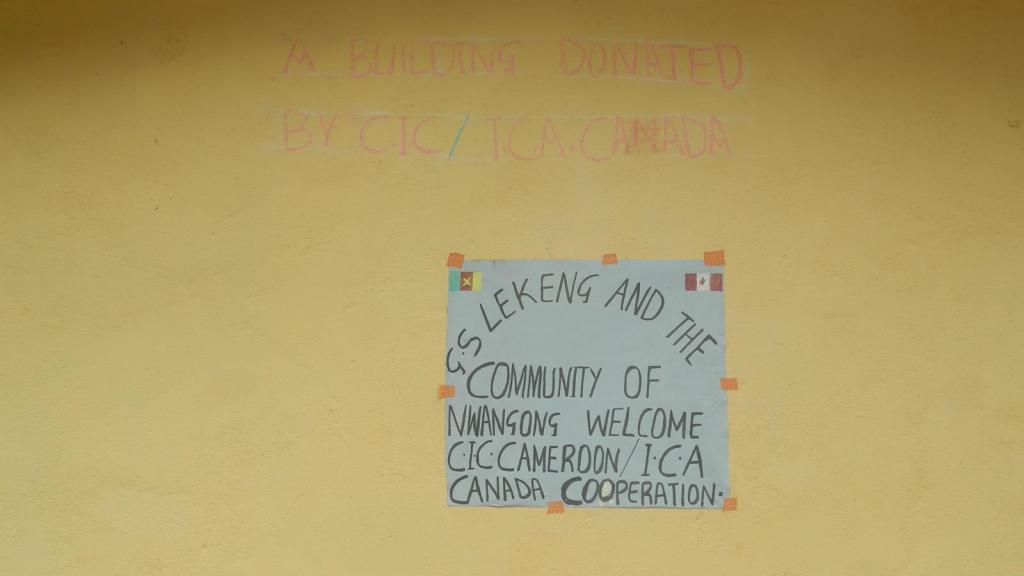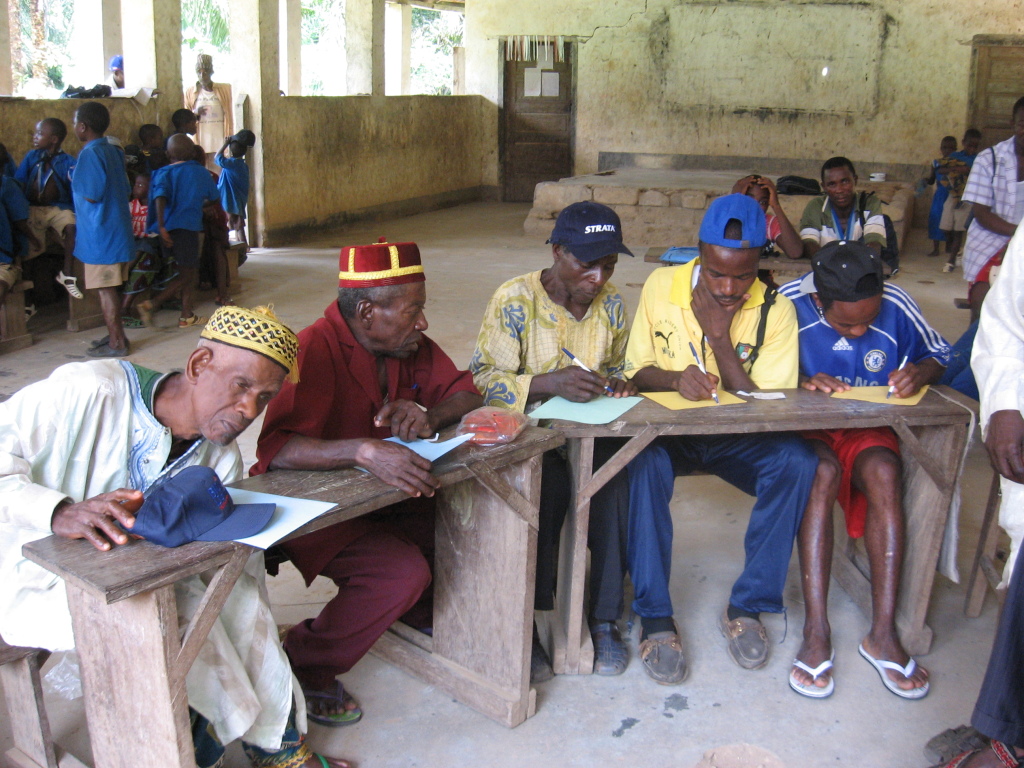
G.S. LEKENG-NWANGONG
Prior to 2008, G.S. Lekeng-Nwangong consisted of one permanent building and one semi-permanent building. However, the main facility was poorly constructed (in 1993) by a government contractor and was never finished. For fifteen years, the community of Lekeng-Nwangong was forced to send their children to an incomplete school that was crumbling. To compound the problem, there was a lack of study materials.
| Headmaster | Ernest Fonoh |
|---|---|
| Number of Teachers | 3 Gov’t, 2 ICA sponsored |
| Number of Pupils | 80 boys, 120 girls |
| Graduation Rate | 15/15, 100% in 2014 |
| Construction Date | 2007 – 2008 |
Prior to 2008, G.S. Lekeng-Nwangong consisted of one permanent building and one semi-permanent building. However, the main facility was poorly constructed (in 1993) by a government contractor and was never finished. For fifteen years, the community of Lekeng-Nwangong was forced to send their children to an incomplete school that was crumbling. To compound the problem, there was a lack of study materials.ICA Canada intervention helped to resolve many of these issues. In addition to acknowledging the importance of the new classrooms, the Headmaster, Mr. Fonoia Ernest, stated “the issue of textbooks and uniforms that was a serious problem some years ago has now been solved. Each child is proud of having a textbook, workbook and a… uniform.” 90% of all graduates go on to secondary school, with the other 10% electing to take a “gap year” (to save money) or go straight to trade school.
“We heartedly thank Major Smith and his ICA team for this great change and wonderful help to our community. We equally express our gratitude for their efforts given to the PTA of G.S. Lekeng-Nwangong and the uniforms and textbooks given to the pupils”
– Fonoh Earnest, Headmaster (February 20th, 2015)
G.S. Lekeng-Nwangong is now a staple in the community. It is used to host PTA meetings and community celebrations. The building has helped to generate excitement around education. Children that attended government schools in other communities are returning home. One teacher reported that “the building creates a better learning environment and has increased parent support”. Education has evolved into a community responsibility. For example, parents review their children’s notebooks to ensure that their students are progressing. They also check the teacher’s notes and corrections. If a pupil is falling behind, older siblings are responsible for tutoring and mentorship. Collins Nkepo Mbah, the grade 5 teacher, uses his home to tutor those seeking help.
The changing effects of education on family dynamics has gone even one step further. One teacher reports that “because of education, the girls are no longer marrying early”.
Possibilities for continued development
The headmaster at G.S. Lekeng-Nwangong requested that ICA sponsor the reconstruction of the older, incomplete, government school. The extra classrooms would help to alleviate the high congestion of students. In addition, the school administration has been using a room in the customary court hall as an office. A permanent headmaster’s office would help to secure school materials. Computers are also highly desired.
Summary
The construction of G.S. Lekeng-Nwangong has helped to change the community’s outlook on education. The prestigiousness of the new building is at the heart of a cultural shift. All families embrace the power of education.






